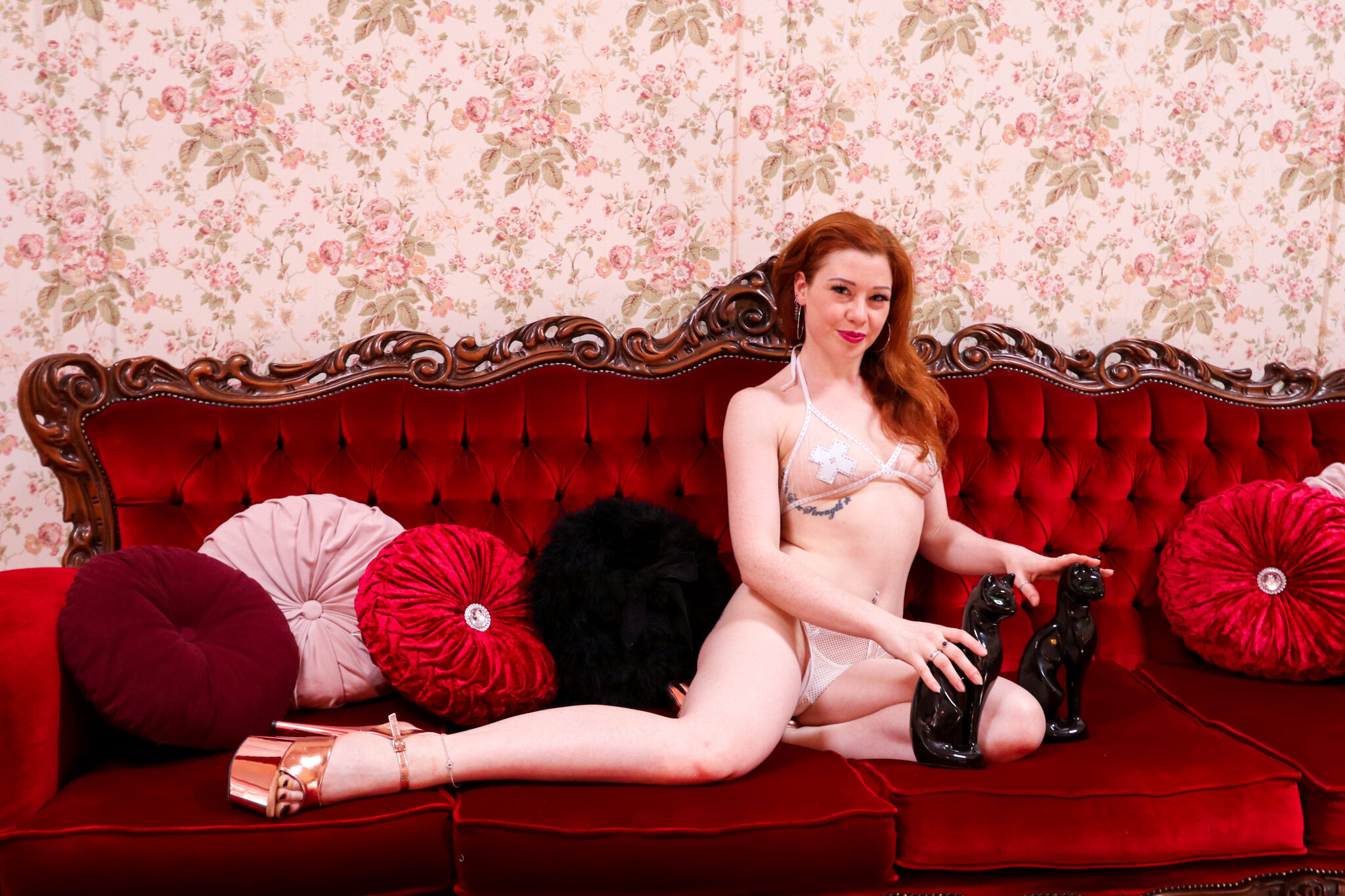Words by Farrah Faust | Photos by Elixir Black & Suzy Lafosse
How superstitious are you? Would you cross the street to avoid a black cat, or is dear little Salem more likely to be a beloved pet? Would rubbing a disembodied rabbit’s foot bring you good fortune, or precipitate a phone call to the RSPCA? Throughout history, dancers, actors, and theatre folk in general have always been a superstitious lot, but whether you have your own belief in superstition or you think it’s all a load of rubbish, both the history and psychology behind these beliefs can be fascinating.
It has been said that of all the professions, actors and athletes are two of the most highly superstitious. Personally, I would define a dancer as being equal parts actor and athlete, so it follows that many dancers also feel drawn to supernatural practices as a way of controlling the uncontrollable.
Professional dancers often spend many years finessing the most minute details of technique and nuance, so it makes sense that they will sometimes turn to superstition to circumvent any misfortune occurring during a performance that they’ve spent years of devoted training plus months of rehearsal leading up to. And in an industry that is often transient and uncertain, wherein employment and financial security can be sporadic, long held traditions passed along from old hands to ingenues provide a kind of cultural continuity. Similarly, communal pre-show rituals - like games, warm ups, and prayers - also reinforce connection between cast mates and dance partners. Seen in this light, superstitions can clearly play a number of important roles, from potentially safeguarding one’s livelihood to forging and strengthening interpersonal bonds.
Interestingly, the concept of hubris seems to be the key to many beliefs. Hubris was originally an ancient Greek warning against displaying excessive pride in defiance of the powers of the Gods, who might then be tempted to punish the arrogant mortal with nemesis, or divine retribution. For example, a perfect dress rehearsal is often believed to presage a poor performance on opening night, and any gifts a performer receives should always be opened after the final curtain call, never before, lest we “tempt Fate”. Perhaps the most well known instance of this performative humility is the common theatrical phrase, “Break a leg,” which sounds like a cruel wish but in fact means good luck.
The origins of this odd superstition are obscure (and there are loads of competing theories!) but the basic principle is that to say, “Good luck!” to a performer immediately invites the opposite (i.e. disaster!) so in order to thwart the impending misfortune of a flopped show or a derailed career, cheerfully wishing someone to, “Break a leg!” instead became the standard. The belief is so well known that Mel Brooks & Thomas Meehan’s smash hit 2001 Broadway musical The Producers (later made into a film of the same name) has an entire number dedicated to the tradition called “You Never Say ‘Good Luck’ On Opening Night”, in which the naive leading man Leo is told in no uncertain terms of the dreaded phrase, “Once it’s said, you are dead / You will get the worst reviews you’ve ever read!”
For many professional dancers however the preferred self-effacing accolade is, “Merde!” Yes, the French word for shit.
It’s likely that this originated simply as a way of emphasising the opposite sentiment to wishing a dancer luck, but one persistent theory holds that back in the day when horse-drawn carriages would ferry patrons to the theatres, all anyone needed to do was look to the street in front of the theatre to check how many tickets had been sold; a clean pavement was a bad sign, but a pavement covered in horse manure indicated a packed house! Another theory posits that perhaps in the days before daily bathing became commonplace, a packed theatre audience in close quarters would create a pretty bad smell…
Whatever the origins of the taboo, should the unlucky phrase “good luck” ever be uttered by a well-meaning well wisher, the performer must take immediate action to counter the curse; there are a lot of variations on this, but the tradition that I grew up with was that one must immediately leave the premises, spin around on the spot three times, spit over one’s left shoulder, curse aloud, and then knock at the stage door and ask permission to be allowed back inside.
Acting out this elaborate counter-curse might not truly reverse bad luck, but at least it provides some entertainment for everyone watching!
As one of the oldest and most highly regimented forms of dance, it shouldn’t be any surprise that when it comes to superstitious dancers, ballerinas lead the pack. Many ballets take place in fairytale worlds which suspend disbelief and engross the characters in enchanted realms, from the fairies of Mendelssohn’s adaptation of A Midsummer Night’s Dream to the magical, titular toy in Tchaikovsky’s The Nutcracker, and the transmogrification from princess to swan in the same composer’s masterpiece, Swan Lake. It’s no wonder then that some of the dancers continually immersed in these imaginary worlds internalise magical tradition and create their own forms of ritual to ensure their safety and prosperity.
British ballet tradition has mixed with the fairy folklore common in the Celtic parts of Europe and resulted in a belief that to trip over the hem of one’s costume is lucky, but only if one immediately kisses the fabric they have just tripped on. This is because it was thought that fairies often played mischievous pranks on humans such as tripping us up, but to kiss the inconvenient piece of clothing is a show of respect and deference to the fairyfolk who will thereafter grant good luck to such a humble performer.
It should also come as no surprise that a lot of balletic superstition revolves around their iconic shoes. Theatrical tradition from playhouse to recital hall holds that no one – be they actor, dancer, or musician - should ever place their shoes on a table, and this is certainly the case for pointe shoes which are often broken in and laced or repaired on chairs or even on the floor rather than run the risk of invoking bad luck.
Similarly, many ballerinas will lace their left pointe shoe first and some will place a silver coin inside their shoe prior to performing, all in order to cultivate good fortune.
From a psychological perspective, we know that these types of repetitive routines create feelings of familiarity within the brain, and this in turn can lessen pre-show nerves. Whether one always puts one’s left shoe on first or prefers to be the last to leave the dressing room, these habits can trick an agitated mind into a state of calm. This illusion of control acts almost like a psychological placebo and helps to transmute an anxious performer’s nervous energy into increased confidence.
However, what may seem at first glance like a harmless or even healthy personal superstition can in fact become detrimental if the performer begins to rely too heavily upon it. An interrupted ritual or a misplaced good luck charm can become a new source of anxiety in itself. Repetitive ritualistic superstitions can even exacerbate pre-existing mental health issues such as Obsessive Compulsive Disorder and there are many stories of dancers – both those living with mental health disorders, and those who do not - who have had to finally lay their treasured lucky trinkets or pre-show rituals to rest, having found that after years of repetition, the superstition itself became the source of their anxieties rather than the cure. As always when it comes to magical practices, be careful how you use it!
On a lighter note, I asked a few of our savvy and seasoned instructors and staff here at Sky Sirens whether they have any pre-show rituals, good luck charms, or personal superstitions that they can’t help enacting before teaching or taking the stage, and I got some interesting answers…
In between greeting students, taking classes, doing design work, and generally running all things admin behind the scenes at Sky Sirens, the stunning Mia Maraschino also finds time to perform, and when they do, they often carry a good luck charm with them. They told me, “It’s a little flat crystal I keep in my bag and sometimes I play with it.” Proving that good luck charms don’t have to be the old clichés of rabbit’s feet and four-leaf clovers; they can be completely unique to you!
Our very own Bollywood Bombshell, Bolly Golightly, told me that every time she comes to the studio she makes a beeline straight for the lyra room, aka The Dollhouse. “I have to mount the lyra,” Bolly says, “even if I’m teaching burlesque or a non-apparatus class.” So if you see Bolly swinging from a lyra while still wearing her everyday clothes, rest assured that she hasn’t forgotten to get changed, she’s just saying hello to her favourite apparatus for luck!
This year marks ten years as a pole dancer and showgirl for Arizona, and before her incredible stage shows she can always be found backstage with a bottle of water prior to performing. But while this is a very practical habit to keep oneself hydrated, it’s also become a bit of a personal ritual... According to our resident Pole Vixen, “I have this irrational fear that I’m going to be in the middle of a show and start choking, so I have to drink water!” Gulp! Irrational or not, it’s still good advice to keep your drink bottles handy backstage.
In a similarly practical vein, the lovely Nicoletta Noir has a habit of incorporating a cute little cartwheel and a backbend into her backstage warm up before gracing the stage. The Vampy Vixen also says, “I never train the night before, I’ve done that once and it was a fucking disaster!”
Speaking of not training or rehearsing, Wednesday has a very unique process when she creates an act – she doesn’t! “I like spontaneity!” she says. While our fabulous Madame Le Strange always has plenty of concepts and characters up her rhinestoned sleeves, and knows her music perfectly, she prefers not to choreograph her routines and instead just goes with the flow of what she’s feeling during her performances, saying, “Whatever’s inside is just taking over for four minutes.” Perhaps this is a case more of a possession than a superstition…?
So whether you prefer to rely on rigid routine or in-the-moment spontaneity to get you through your next big show, hopefully you feel like you’ve now got a better grasp on the superstitions and strange beliefs that can come hand in hand with being a professional performer. And maybe next time you’re tempted to wish someone, “Good luck!” or you trip over a piece of your costume, you’ll think twice and thank your lucky stars!





